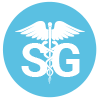What is Slip Disc?
The spinal column in a human body is a series of bones called vertebrae stacked on one another to form the spinal cord. Spinal cord from top to bottom includes a series of bones as follow;
• Seven bones in the cervical spine
• Twelve bones in the thoracic spine
• Five bones in the lumbar spine
• Sacrum
• Coccyx
These bones are supported by discs, which protect the bones while doing daily activities by absorbing shocks. The discs comprise two parts: gelatinous, soft inner ring and a hard outer ring.
The inner portion of the disc can protrude through the outer ring during an injury or weakness. This phenomenon is known as a slip of disc also known as a herniated or prolapsed disc. This slip of disc causes pain and discomfort. Numbness or pain along the nerves can be experienced if a slipped disc compresses any nerves. Surgery to remove or repair disc is required in severe cases as well.
What are the symptoms of Slip Disc?
Slip of disc can occur in any part of the spinal cord from top to bottom of the spine i.e. from cervical to sacrum. The phenomenon of slip disc is common in the lower back. The spine contains nerves and blood vessels which can be suppressed by the slip disc and can cause extra pressure around the nerve or the muscles which may cause lower back pain on the left side or the right side.
The symptoms of the slipped disc can include;
• One-sided body pain and numbness
• Pain can extend from the spine area and affect your arms and legs.
• Pain which gets worse at night or while performing any kind of certain activities.
• After sitting or standing, the pain starts to worsen.
• Feeling pain while doing short distance walks.
• Muscles weakness due to unexplained illness.
• Having a sensation of tingling, aching or burning in the affected area of the body.
• Varying from person to person, pain can be of various types. If you feel unable to control the muscles of the affected area due to pain which causes tingling or numbness, consult a physician immediately.
Causes of Slip Disc:
A slipped disc takes place when the outer tough part of the disc becomes weak or is torn, which allows the soft inner portion called as gelatinous of the disc to slip out. A slip of the disc can be caused by the age or due to any certain type of motions and activities as well.
The slip of disc can occur when you are twisting or turning to a lift a heavyweight or object. A great strain can occur on the lower back while lifting a very large and heavy object which can result in the slip of the disc. People that tend to do physical work that needs a lot of lifting are more likely to be the victim of a slipped disc which may cause them to experience lower back pain on the left side or the right side.
People that tend to have heavyweight has an increased probability of slipped discs, as their body discs must need to support their additional weight. The heavy body sets are most probable to face the slipped disc issues as the disc can’t support their body weight. Weak muscles and a luxurious lifestyle can contribute to the slip of disc as well. With age, the slip of the disc can occur both in men and women as the disc outer part starts to grow weak as it loses some of the protective water with age.
What are the available options for Slip Disc Treatment?
Slipped disc treatment can be conservative or surgical depending upon the level of discomfort felt and how far the disc has slipped out from its place. Slipped disc can be curved by using a prescribed exercise from the physician which stretches and strengthens the back and surrounding muscles. The use of pain relievers, avoiding heavy lifting and stressful positions can be helpful as well.
To avoid muscle weakness and joints stiffness, it is recommended to keep yourself as active as possible by stretching or low impact activities. In the case of nonresponsive behaviour from slip disc, physicians can recommend stronger medication including;
• Muscle relaxants
• Narcos and medications for nerve pain
• Surgery is advised by your physician if the slipped disc is affecting the muscles function or the symptoms doesn’t subside in six weeks. The surgeon can carry out the process of microdiscectomy which involves removal of damaged or protruding portion instead of removing the entire disc. In more severe cases the surgeon can remove the disc from the spine and replace it with an artificial disc to fuse vertebrae together. Laminectomy and spinal fusion alongwith the replacement of disc add stability to your spine.
Slip Disc Treatment in Singapore:
Singapore is famous for medical tourism around the world, people prefer to come for slip disc treatment in Singapore. The city not only offers the best medical facilities and treatment by skilled doctors but also at way lesser cost than many other advanced countries. Slip disc can hinder your lifetime mobility, so it is better to treat your slip disc on the right time from experienced surgeons to have a pain-free future.


